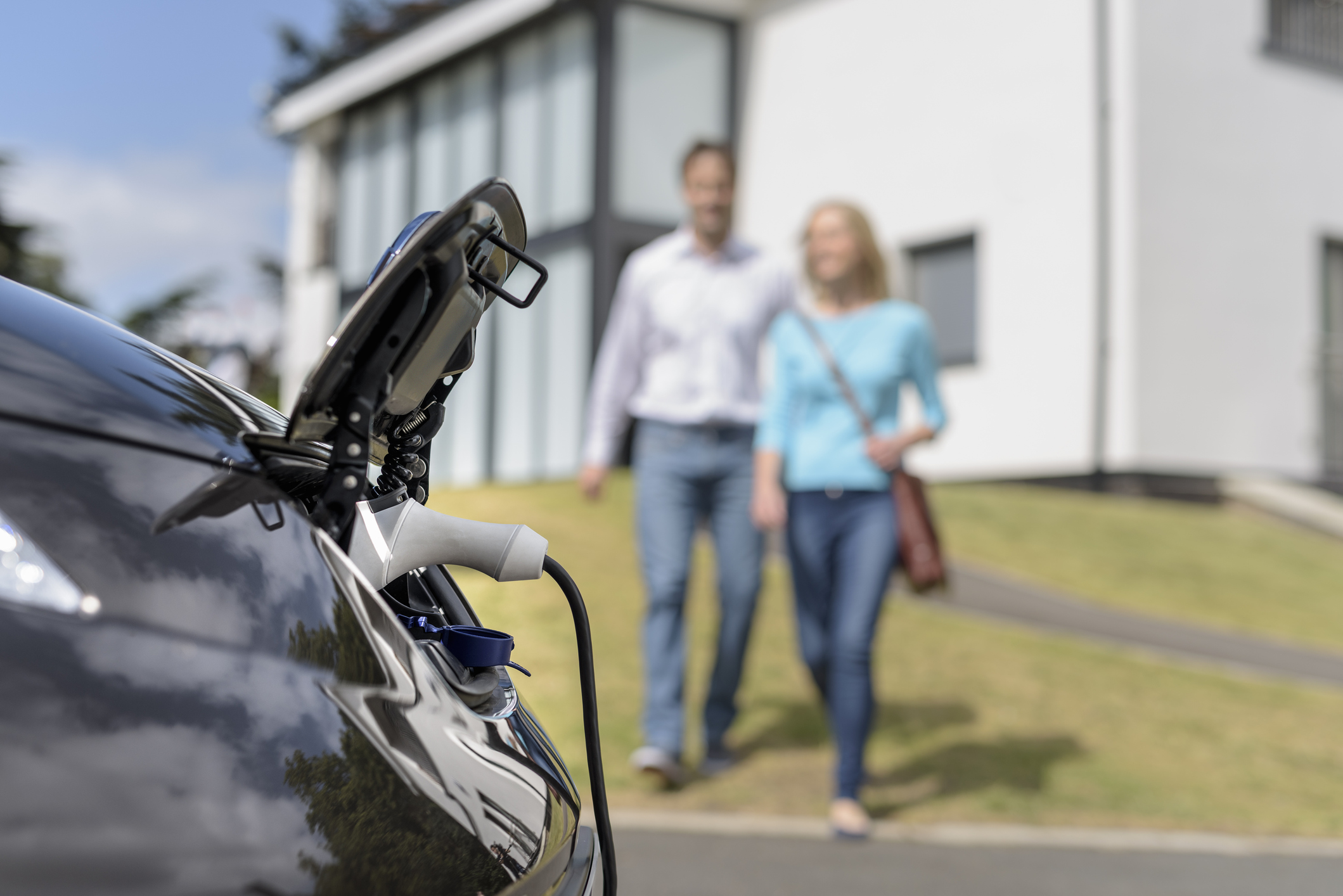
Key technologies fighting climate change and biodiversity loss – an investor’s guide
Key points:
- Innovations in smart energy, renewables, battery energy storage systems and ‘agritech’ are helping drive progress towards global climate goals
- The positive backdrop of consumer momentum and government policy is highly supportive for clean energy growth
- This environment will help those companies delivering game-changing tools, creating many investment opportunities
Despite the progress being made in the battle against global warming, it’s clear the pace and scale of efforts still need to dramatically increase, especially given recent headlines.
A sobering report from the World Meteorological Organization found there is a 66% chance that global temperatures will pass the +1.5°C global warming threshold set out in the Paris climate agreement for at least one year between now and 2027. It also concluded there is a 98% chance the world will experience record-breaking annual temperatures within the next five years.1
Equally, Earth’s biodiversity is deteriorating at an alarming rate, causing damage not only to the natural world but to wider society and the global economy, which often relies upon it as a resource directly used by people and businesses.
In 2022, some 4.1 million hectares of tropical primary forest were lost, 10% more than in 2021. This resulted in 2.7 gigatonnes of carbon dioxide emissions, equivalent to India’s annual fossil fuel emissions.2
Climate change is of course one of the primary drivers of biodiversity loss. The destruction of ecosystems weakens nature’s ability to regulate greenhouse gas emissions and protect against extreme weather.
Given climate change and biodiversity loss are so inextricably linked, they must be tackled together. Consumption, energy generation and land use cannot continue in the unsustainable manner they have done.
Innovation and legislation
Thankfully innovation in engineering and digital technology is helping drive progress towards global climate goals. In addition, consumer momentum and government policy are helping to spur on the development of technologies able to make an impact. For example, the introduction of the US Inflation Reduction Act (IRA) in August 2022 should spearhead a new wave of growth and innovation and go some way in helping the private sector – and investors – decarbonise energy, transportation, agriculture and other emissions intensive sectors.
The legislation has earmarked billions in new spending and tax breaks designed to increase clean energy investment, cut healthcare costs, and raise tax revenues. Overall, some $43bn in IRA tax credits will aim to cut emissions by making electric vehicles (EVs), energy-efficient appliances, rooftop solar panels, and home batteries more affordable.3 Europe responded with its own Green Deal Industrial Plan, aiming to create a more supportive environment for scaling up the European Union’s manufacturing capacity for net zero technologies and products.
We believe this backdrop should drive profits for the companies delivering game-changing tools which secure widespread adoption. This will create opportunities for portfolios if investors can closely track some of the key areas where this impact can be greatest.
As well as protecting the planet itself, greater sustainability means more sustainable future economic growth, and we believe this growth depends on technology. Below we highlight some of the most exciting technological advances aiming to secure a net zero future.

Low-carbon transport
Globally the combination of robust policy support in key markets, a wave of new product launches and continued technological innovation is supportive of rapid adoption of EVs. Ditching combustion engines is vital as passenger cars are the largest contributor to transport sector carbon emissions, at 39%.4Thankfully, many major automobile makers are taking notice; Ford and Jaguar Land Rover for example have committed to having all-electric ranges in the next decade.5
Consumer appetite for EVs is accelerating. According to the International Energy Agency (IEA), more than 10 million EVs were sold worldwide in 2022 and sales are expected to grow by another 35% this year, accounting for 18% of the global car market. The IEA expects EVs to account for 60% of total new car sales across China, Europe and the US by 2030, helping avoid the need for up to five million barrels of oil each day.6 Separate research shows that globally revenues from EV sales are forecasted to hit an annual growth rate of 10.07% between 2023 and 2028.7
What’s more, the whole EV supply chain should benefit from an increasing adoption rate in the coming years – longer-lasting batteries, private and public charging stations, semiconductors which can minimise power loss and support performance and so on.
Battery performance and longevity are often hurdles for EVs; typically, vehicles can drive between approximately 100 to 300 miles – model dependent - before recharging is required but specialists including Chinese group CATL, and Korean group Samsung SDI are pioneering this technology.8 The latter is currently developing a high-capacity solid state battery that enables an EV to drive much further on a single charge, and it expects to commercialise this breakthrough soon, which could be a gamechanger for the industry.9 Only a few years ago, this seemed unrealistic.
Smart energy and renewables
Given the number of government commitments to achieving net zero targets within the next three decades, the world would need to increase renewable energy capacity by three or four times. Thankfully, renewable energy costs are generally becoming cheaper than fossil fuels and we believe the backdrop for clean energy growth – i.e., wind, solar and batteries - is very positive.
We think growth in both technologies will be driven by their already-compelling economics - including continued improvements in efficiency and technology, and likely ongoing policy support from governments.
BloombergNEF expects annual wind installations to rise by circa 50% between 2022 and 2030 while solar should increase by even more, at around 85%.10
Looking at solar power, one analysis valued the global market size at $197.2bn in 2021 and anticipates it to grow to some $368.6bn by 2030 - a compound annual growth rate of 7.2%.11
Among the leaders in this area is First Solar, the largest utility-scale solar PV manufacturer in the Western Hemisphere, which has developed a technology to increase the energy yield of its solar panels.12 Then there are specialists in the residential solar sector such as Enphase, which uses cutting-edge microinverter technology to turn sunlight more efficiently into electricity at the household scale.13
Ultimately, the long-term goal will be to see homes and businesses become independent from the traditional power grid. Currently market penetration is low but solar is the cheapest form of renewable energy and as such the growth potential is considerable.
The storage solution
By moving away from coal and gas-fired power generation and adopting renewable energy sources, we are essentially transitioning the grid. But wind and solar are intermittent forms of energy; you can't control when they're on and when they’re off. As such as we need large scale storage to even that out. This is where battery energy storage systems (BESS) offer a compelling solution, and the companies involved in this technology such as NextEra Energy and Sungrow are growing as hardware prices fall.
According to consultancy McKinsey, more than $5bn was invested in BESS in 2022, nearly a threefold rise from 2021. It expects the global BESS market will reach between $120bn and $150bn by 2030, over double its current size – and that utility-scale BESS, which already accounts for the bulk of new annual capacity, will grow around 29% per annum until 2030.14

Agriculture and waste management
Corporations are developing products aimed at having a positive impact on biodiversity preservation - and the wider environment - and this is especially true in the agriculture, waste and sustainable materials sectors.
Agricultural technology – or ‘agritech’ - describes the use of technology across the agriculture sector – from horticulture to aquaculture - with the aim of improving crop yields, farming performance and bolstering profitability, in a climate and biodiversity friendly manner.
The market is rapidly expanding; the global agritech market was valued at more than $22bn in 2022 and expected to grow at an annual compound rate of 13.1% between 2022 and 2032. Globally the sector is expected to reach $75.8bn by 2032.15
The technology spans genetics, big data, machine learning and even artificial intelligence (AI). For example, UK animal genetics company Genus breeds pigs and cattle through selective breeding, which can produce high-quality meat and milk more efficiently and sustainably. The group is also using gene editing to help grow resilience to costly diseases in farm animals like porcine reproductive and respiratory syndrome.
Elsewhere, US group Valmont deals in precision irrigation, where sensors look for signs of drought or heat stress in soil; US giant John Deere has developed its See & Spray system which via computer vision and machine learning specifically targets weeds in corn, soybean, and cotton.
AI has also been identified as a potentially crucial tool for streamlining the identification and processing of recyclable materials with large potential productivity gains that could benefit investors. Norwegian group Tomra for example provides advanced collection and sorting systems, and food processing, by employing sensor-based sorting and grading technology which uses deep learning, a subset of AI.
US group Li-Cycle recycles lithium-ion batteries, which are used in EVs and battery energy storage systems and should benefit from the trend of onshoring in the US. There have been big questions around circularity and recyclability of batteries, but this firm is providing a solution by recovering critical materials including cobalt and nickel from all types of lithium-ion batteries and reintroducing them back into the supply chain.
The next big thing
As time moves on, technologies will evolve. It may well be the real climate tech breakthrough is still on the horizon. There is exciting progress being made in several areas such as sustainable aviation fuel (made from cooking oil, municipal waste or woody biomass) and carbon capture and storage (CSS) – where CO₂ is caught before it goes in the atmosphere. Most CCS companies are still small but some, like Norwegian firm Aker, have listed on stock exchanges, and others are either already part of a larger group or likely to be bought if they can prove efficacy.
Then there is direct air capture technology which extracts CO₂ directly from the atmosphere at any location. Another area of interest is green steel - steel manufactured by a process which emits less greenhouse gases than conventional steelmaking, often by using green hydrogen instead of fossil fuels. This could help deliver the 50% reduction in emissions from steel manufacturing needed by 2050, though it remains a long way from being deployed at a substantial scale. All this technology is critical to reaching net zero.
Equally analytical and big data technologies are supercharging our understanding of the complex and multi-faceted ways in which biodiversity is being damaged and helping guide how we might best structure our response.
Ultimately, there will not be a single technological silver bullet but rather a multitude of solutions which truly take the fight to climate change and biodiversity loss. We believe all efforts which can improve processes, efficiency, design and construction across industries will add to CO₂ reduction efforts, and in turn, create new potential investment opportunities.
References to companies are for illustrative purposes only and should not be viewed as investment recommendations.
- Global temperatures set to reach new records in next five years | World Meteorological Organization (wmo.int)
- The Latest Analysis on Global Forests & Tree Cover Loss | Global Forest Review (wri.org)
- What’s in the Inflation Reduction Act (IRA) of 2022 | McKinsey
- Global transport CO2 emissions breakdown 2021 | Statista
- Ford and Jaguar Land Rover commit to only electric cars by 2030, Production Engineering Solutions, 2021
- Electric vehicles - IEA/ Smaller EV prices to come down as EV sales climb, IEA says | Reuters
- Electric Vehicles - Worldwide | Statista Market Forecast
- Electric Cars With the Longest Range | Cars.com
- About the types of electric cars and their future (samsungsdi.com)
- Bloomberg New Energy Finance, July 2022
- Solar Power Market Size, Growth, Trends, Report 2022 to 2030 (precedenceresearch.com)
- First Solar showcases pre-commercial bifacial thin-film PV modules – pv magazine International (pv-magazine.com)
- Discover our journey to global renewable energy leader | Enphase
- Enabling renewable energy with battery energy storage systems | McKinsey
- Global Agritech Market Size, Share & Trends Forecast 2032 (sphericalinsights.com)
Read more on Technology
Disclaimer
This document is for informational purposes only and does not constitute investment research or financial analysis relating to transactions in financial instruments as per MIF Directive (2014/65/EU), nor does it constitute on the part of AXA Investment Managers or its affiliated companies an offer to buy or sell any investments, products or services, and should not be considered as solicitation or investment, legal or tax advice, a recommendation for an investment strategy or a personalized recommendation to buy or sell securities.
Due to its simplification, this document is partial and opinions, estimates and forecasts herein are subjective and subject to change without notice. There is no guarantee forecasts made will come to pass. Data, figures, declarations, analysis, predictions and other information in this document is provided based on our state of knowledge at the time of creation of this document. Whilst every care is taken, no representation or warranty (including liability towards third parties), express or implied, is made as to the accuracy, reliability or completeness of the information contained herein. Reliance upon information in this material is at the sole discretion of the recipient. This material does not contain sufficient information to support an investment decision.
Issued in the UK by AXA Investment Managers UK Limited, which is authorised and regulated by the Financial Conduct Authority in the UK. Registered in England and Wales, No: 01431068. Registered Office: 22 Bishopsgate, London, EC2N 4BQ.
In other jurisdictions, this document is issued by AXA Investment Managers SA’s affiliates in those countries.
© 2023 AXA Investment Managers. All rights reserved
Risk Warning
The value of investments, and the income from them, can fall as well as rise and investors may not get back the amount originally invested.